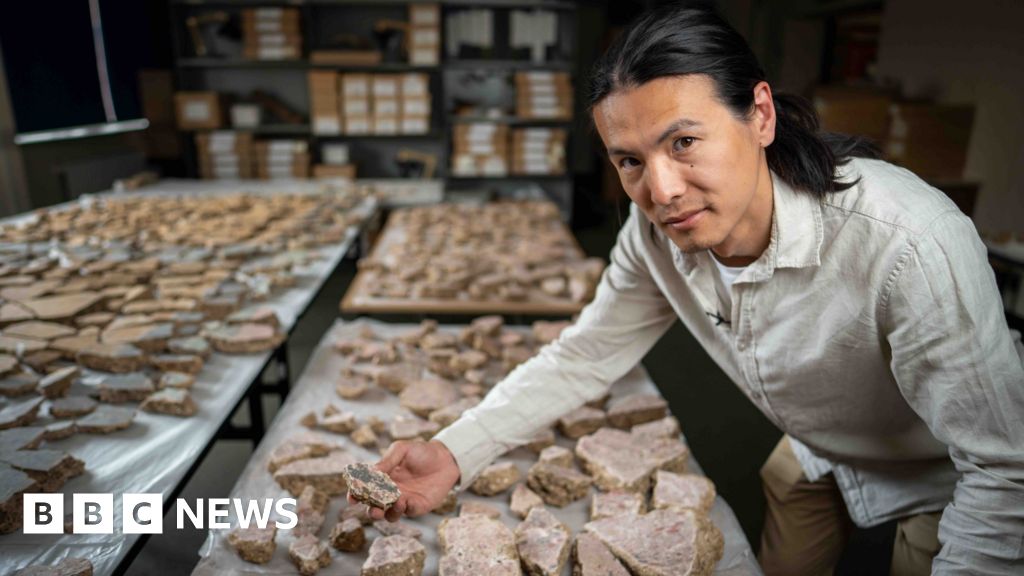Auto Amazon Links: No products found. Blocked by captcha.
Fragments of wall plaster dating back 2,000 years have been meticulously pieced together by archaeologists, unveiling stunning frescoes that adorned a lavish Roman villa. The discovery was made at a construction site in central London in 2021, but the arduous task of reconstructing the shattered plaster has taken until now to complete. These frescoes, found on at least 20 walls of the villa, feature intricate details of musical instruments, birds, flowers, and fruit.
These ancient artworks are shedding light on the opulence of the area where they were uncovered, described by the team as the “Beverly Hills of Roman London.” One fragment bears the Latin word Fecit, meaning “has made this,” hinting at the identity of the artists behind the masterpiece. The missing piece that holds the artist’s name remains elusive, causing excitement among the team at the Museum of London Archaeology (Mola) as they continue their painstaking search through the fragments.
Measuring approximately 5m by 3m, the largest fresco displays a lower section of pale pink resembling marble, adorned with candelabras, lyres, cranes, and what is believed to be mistletoe. The frescoes also depict a bunch of delicate daisies and a bunch of grapes, showing the artists’ local influence on classical ideas. The team at Mola is drawing comparisons between these frescoes and others found across Britain and Europe, suggesting that a group of highly skilled painters traveled across the Roman empire undertaking large painting commissions.
The villa, believed to have belonged to a wealthy family or served as a luxurious inn for affluent travelers, was constructed shortly after the Romans established London in AD43. The archaeological findings at this Southwark site, including a mosaic and Roman cemetery, are providing valuable insights into the early Roman settlement and urban expansion of London. Discoveries like these fragments of frescoes are crucial in piecing together the rich history of Roman Britain and the skilled artisans who left their mark over two millennia ago
Read the full article from The BBC here: Read More
Auto Amazon Links: No products found. Blocked by captcha.











